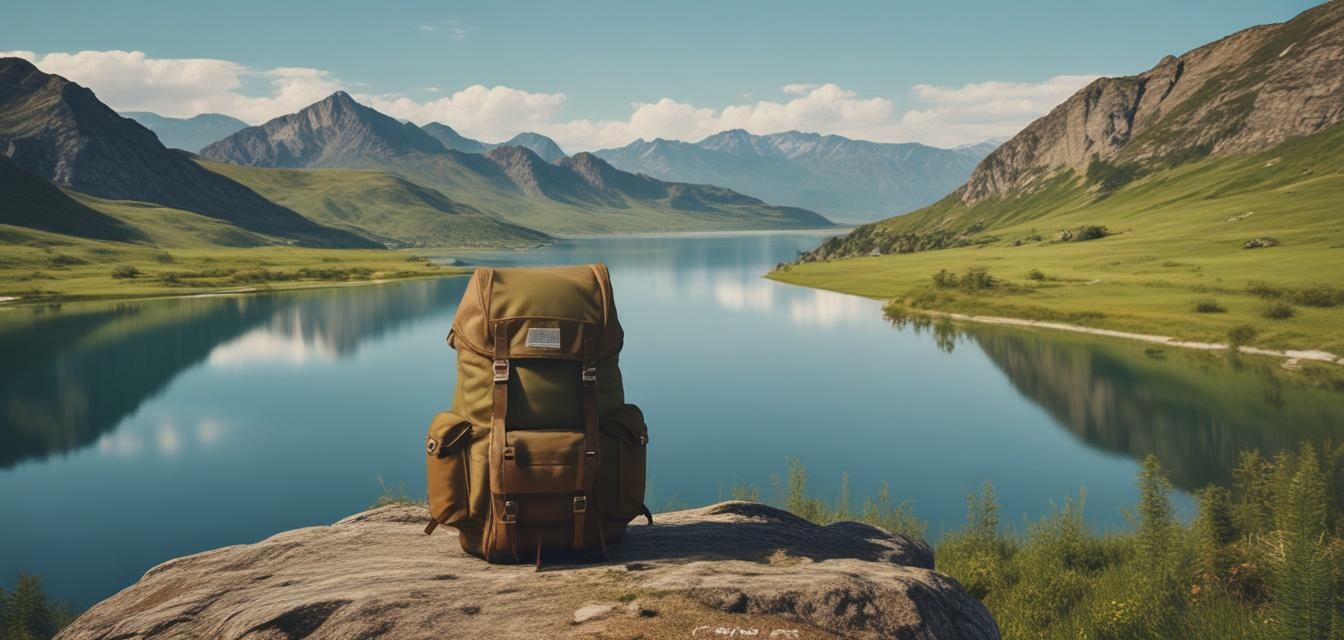
Traveling light: Packing tips for day hikes
Key Takeaways
- Choose the right backpack for your hike.
- Pack only essential items to minimize weight.
- Use packing techniques to stay organized.
- Consider the length and difficulty of your hike when packing.
- Always prepare for changing weather conditions.
Heading out for a day hike can be one of the most fulfilling experiences for outdoor enthusiasts. However, the packing process can often seem daunting. Packing efficiently ensures you travel light while remaining prepared for anything nature throws your way. Let’s explore effective packing strategies that help you enjoy your hike without the burden of excess weight.
Choosing the right backpack
Your backpack is your constant companion during a hike, so selecting the right one is crucial. Consider the following features:
- Volume: A backpack with a capacity of 20-30 liters is typically sufficient for day hikes.
- Fit: Ensure the straps and waist belt are adjustable for comfort.
- Ventilation: Look for breathable materials, especially for warm-weather hikes.
Essential items for a day hike
When packing your backpack, focus on essential items that cater to your needs:
| Item | Purpose |
|---|---|
| Water | Stay hydrated during the hike. |
| Snacks | Maintain energy levels on the trail. |
| First-aid kit | Address minor injuries and health issues. |
| Map and compass | Navigate effectively, even without a phone. |
| The right clothing | Maintain comfort and protection against elements. |
| Extra layers | Prepare for changing weather conditions. |
| Multi-tool or knife | Handle unexpected situations. |
Packing techniques to travel light
Learning how to pack efficiently will save space and prevent items from shifting during your hike:
- Roll your clothes: Save space and reduce wrinkles.
- Use packing cubes: Organize items and maximize space.
- Place heavier items near your back: Maintain balance and stability.
- Utilize external straps: Carry additional gear securely.
Preparing for changing weather conditions
Weather can be unpredictable, so it’s important to be prepared:
- Check the forecast: Prioritize safety by staying updated.
- Dress in layers: Easy to adjust as conditions fluctuate.
- Pack a rain cover: Protect your gear from water damage.
Consider the length and difficulty of your hike
The nature of your hike often dictates what to pack:
- Short hikes (2-4 hours): Focus on water, snacks, and first-aid supplies.
- Medium hikes (4-8 hours): Include extra food, additional clothing, and a way to navigate.
- Long hikes (8+ hours): Assess the need for camping gear or overnight items.
Quick tips for beginners
- Always pack more water than you think you need.
- Choose food that’s high in energy but low in weight.
- Familiarize yourself with the trail before setting out.
- Prioritize comfort—if something feels off, adjust your gear.
Final thoughts
Day hiking should be an enjoyable experience that allows you to connect with nature. By applying these packing tips, you’ll not only travel light but also ensure you have everything you need for a successful adventure. Whether you're just starting out or looking to streamline your packing process, remember that preparation and organization will make all the difference.
Pros
- Lightweight packing allows for easier movement on trails.
- Essential items ensure you are prepared for emergencies.
- Organized gear helps improve efficiency during hikes.
Cons
- Packing too lightly may lead to missing essential items.
- Extra layers can add weight, making it a balancing act.
Explore more tips
For more expert advice tailored to your outdoor adventures, check out our detailed guides on buying gear and tips for outdoor activities. Remember, the right preparation can make all the difference in your adventure!